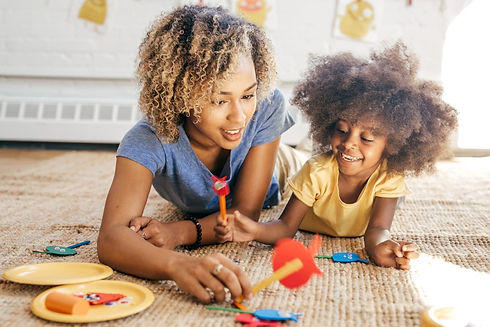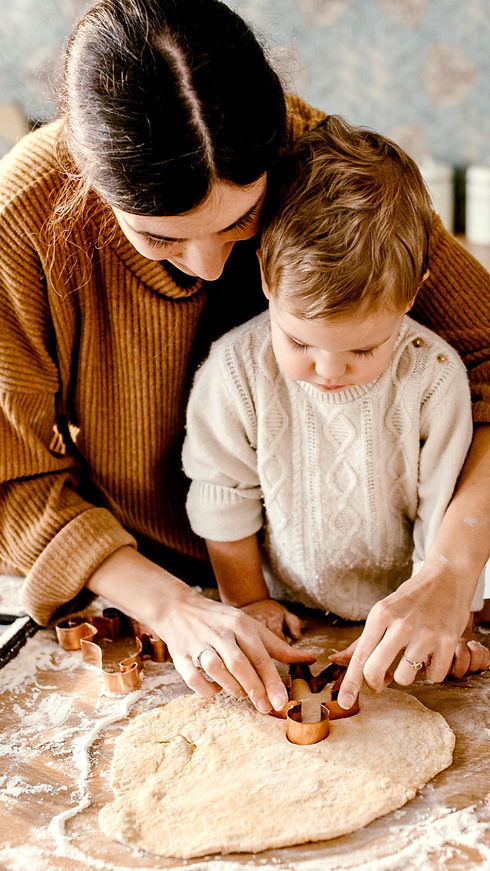

It Starts with
Connection
Marte Meo
Getting curious about what is the reason behind your child’s behaviour
Grows a caregiver’s confidence to connect and support their child's individual stage of development

Marte Meo, which translates from Latin “on one’s own strengths,” assists parents to enhance their interactions with their children.
Marte Meo is a therapeutic approach that uses video feedback to support the development of children and improve relationships between caregivers and their children.
By focusing on both parent and child initiatives, Marte Meo emphasises the importance of everyday interactions in building a strong foundation for future relationships.
This practical approach not only supports child development but also strengthens the bond between parent and child.
What is the Marte Meo Approach?
The Marte Meo Approach is a developmentally focused, strengths-based method designed to support children’s social, emotional, and communication growth. Developed by Maria Aarts over 40 years ago, it originated from her work with children with autism and has since become widely used to assist families, educators, and caregivers in fostering positive development.
One of the key aspects of the Marte Meo approach is the identification of a child’s strengths (skills they already have) and possibilities (areas where they may need additional support). For example, through the video analysis, a practitioner might see that a child is capable of taking turns in play or making eye contact, and this becomes the basis for fostering more complex social or emotional interactions.
In the rush of everyday life, it’s often difficult to notice subtle interactions or cues from the child. Film analysis slows down the process, allowing caregivers and practitioners to reflect on these interactions moment by moment. This creates a clearer picture of how a child responds in different situations, offering new opportunities for insight and growth.
.


Who is the Marte Meo suitable for?
Marte Meo was first developed first through Maria’s work with children with Autism to increase their social and emotional development and improve the connection with their caregivers. Marte Meo has since grown to be used with a wide range of children from ages of early infancy to 12 years old.
Marte Meo has been proven to be effective in supporting children;
-
with developmental disabilities
-
Neurodivergent children (ADHD, Autistic, sensory differences)
-
behavioural needs
-
separation anxiety
-
with developmental trauma & who live in out-of-home care settings
-
Premature babies
-
School readiness preparation
What are the benefits of Marte Meo?
In addition to identifying children’s strengths and possibilities the Marte Meo approach provides parent, carer with the opportunity to look with new eyes at your interactions with children.
Marte Meo also identifies concrete strategies you can use to support children to connect with each other and to encourage children to cooperate when a task need to be done as well as:
-
improve attachment bonds
-
improve felt security
-
improve emotional intelligence
-
increase self-awareness and regulation of body movements
-
improve language in social contexts and therefore improves social skill development
-
improve attention and emotional and behavioural regulation, builds self-confidence
-
improve imaginative play and promotes predictability and co-operation.


What is involved in Marte Meo?
The main goal is to help caregivers better understand their child's behavior and developmental needs by looking at real-life interactions and play. Here’s how it typically works:
-
Video Recording: Caregivers are asked to record videos of everyday interactions with their child. This could include moments of play, mealtimes, or other activities where the child’s behaviour and developmental stage are evident.
-
Video Analysis: These video recordings are then analysed during sessions. The caregiver and a trained Marte Meo practitioner review the videos, focusing on key moments that reveal the child’s current developmental stage and needs.
-
Feedback and Guidance: During these sessions, the practitioner provides feedback, highlighting strengths and areas for improvement in the caregiver’s responses to the child. This feedback is meant to empower caregivers to recognise the ways they can enhance their child’s development through their interactions.
-
Skill Development: As caregivers observe and discuss these video clips, they’re encouraged to practice new skills and approaches. This might involve learning how to respond more effectively to the child’s emotional cues, helping with attachment, or improving communication. The aim is to foster positive changes in everyday interactions, based on what’s seen in the videos.
-
Support with Specific Issues: Marte Meo is flexible. For example, if there’s a specific challenge like behavioral issues, feeding difficulties, or attachment concerns, caregivers can focus on those issues within the video analysis. By targeting specific areas of concern, caregivers can develop a deeper understanding of how to address these challenges effectively.
The process is both reflective and action-oriented, helping caregivers learn in real-time how to respond to their child's needs. It’s a powerful tool because it’s based on actual, concrete examples, making the feedback relevant and immediately applicable.